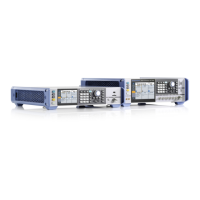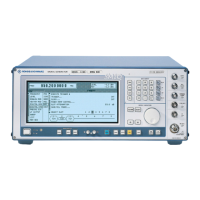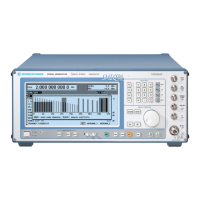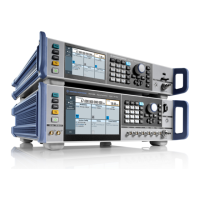SME Introduction/Brief Instructions
1038.6002.02 3.1 E-13
3 Remote Control
3.1 Introduction
The instrument is equipped with an IEC-bus interface according to standard IEC 625.1/IEEE 488.1 and
a RS-232 interface. The connectors are located at the rear of the instrument and permit to connect a
controller for remote control. The instrument supports the SCPI version 1994.0 (Standard C
ommands
for Programmable Instruments). The SCPI standard is based on standard IEEE 488.2 and aims at the
standardization of device-specific commands, error handling and the status registers (see Section
3.5.1).
This section assumes basic knowledge of IEC-bus programming and operation of the controller. A
description of the interface commands is to be obtained from the relevant manuals.
The requirements of the SCPI standard placed on command syntax, error handling and configuration of
the status registers are explained in detail in the respective sections. Tables provide a fast overview of
the commands implemented in the instrument and the bit assignment in the status registers. The tables
are supplemented by a comprehensive description of every command and the status registers. Detailed
program examples of the main functions are to be found in annex D. The program examples for
IEC-bus programming are all written in QuickBASIC.
Note: In contrast to manual control, which is intended for maximum possible operating convenience,
the priority of remote control is the predictability of the device status. This means that when
incompatible settings (e.g. activation of PM and FM at the same time) are attempted, the
command is ignored and the device status remains unchanged, i.e. is not adapted to other
settings. Therefore, IEC/IEEE-bus control programs should always define an initial device status
(e.g. with command *RST) and then implement the required settings.
3.2 Brief Instructions
The short and simple operating sequence given below permits fast putting into operation of the
instrument and setting of its basic functions.
3.2.1 IEC-Bus
It is assumed that the IEC-bus address, which is factory-set to 28 has not yet been changed.
1. Connect instrument and controller using IEC-bus cable.
2. Write and start the following program on the controller:
CALL IBFIND("DEV1", generator%) Open port to the instrument
CALL IBPAD(generator%, 28) Inform controller about instrument address
CALL IBWRT(generator%, "*RST;*CLS") Reset instrument
CALL IBWRT(generator%, "FREQ 50MHz") Set frequency to 50 MHz
CALL IBWRT(generator%, "POW -7.3dBm") Set output level -7.3m dBm
CALL IBWRT(generator%, "AM:SOUR INT1") Set AM modulation source LFGEN1
CALL IBWRT(generator%, "AM:INT1:FREQ 15kHz") Set AM modulation source LFGEN1
CALL IBWRT(generator%, "AM 30PCT") Set AM modulation depth 30%
CALL IBWRT(generator%, "AM:STAT ON") Switch on AM
An amplitude-modulated signal is now applied at the output of the instrument.
3. To return to manual control, press the LOCAL key at the front panel.
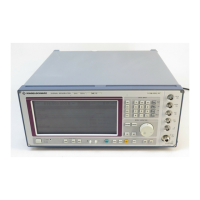
